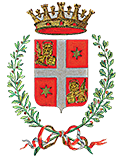Giorgione’s Altarpiece
Inside the Duomo, in the Costanzo Chapel, you can see the famous altarpiece by Giorgione. It was commissioned by Tuzio Costanzo, Knight of the Order of Malta from Messina, for his son Matteo's death and realised in 1503-1504.
The painting is one of the few dated works by Giorgione. It was realised in 1503-1504 (some scholars supposed in 1500). The altarpiece shows the Virgin and Child, and in the foreground San Francesco and San Nicasio (in the past he was identified as San Giorgio or San Liberale, patron saint of Castelfranco and Treviso), recognised by the banner of the Military Order of Malta, called Gerosolomitani or Giovanniti. San Nicasio belonged to this Military Order and after his martyrdom (1187) was venerated with San Francesco, especially in Messina, the hometown of Tuzio Costanzo, commissioner of the painting and Knight of the Order of Malta.
The altarpiece, realised on wood, was restored many times since the 17th century and on the 10th December 1972 it had been stolen. Finally, in 2002-2003 it underwent complex and fine restauration, for the exhibition “Giorgione. Le maraviglie dell’arte”, set at the Gallerie dell’Accademia in Venice, from the 1st November 2003 to the 22nd February 2004 .
In the painting, Giorgione introduces innovative elements for the venetian painting style of the Renaissance. The famous masterpieces La Tempesta (The Storm), La Vecchia (The Old Lady), I tre filosofi (The Three Philosophers) and the Frieze represent allegories close to inscrutable hermeticism. The Altarpiece confers to Giorgione the role of the highest interpreter of the venetian tonal painting of the second half of the 15th century: the artist superimposed layers of colour to define the images, using the so-called “painting without drawing” technique. This technique was studied by Giorgio Vasari in his work Vite (1550): the soft chiaroscuro avoids the marked difference between light and darkness.
The authentic innovation of this painting is the new representation of the traditional altarpieces (compared to works by Piero della Francesca, Ercole de’ Roberti, Antonella da Messina, Giovanni Bellini and Lorenzo Lotto): there is no reference to the Aulic and ecclesiastical world. The architecture of the painting follows a pyramid: Giorgione painted an almost unnaturally high throne in the centre of the scene, and in the background a beautiful landscape of lowland and hills. Two small soldiers and a town represent war, origin of pain and death. A red velvet curtain defines two different “levels” of the painting: the human world, where the Virgin and Child live, and the sacred space where in a meditative dimension the Saints represent voldness (Nicasio) and mercy (Francesco), and look at the devout.
Recent studies on the Altarpiece proposed new and convincing interpretations, based on the analysis of the original Costanzo Chapel in the old church (renovated in 1467), demolished before building the new Cathedral by Francesco Maria Preti (1724).
In the current Chapel (inaugurated in September 1935), the altarpiece and the tombstone are different from the original of the 16th century. Furthermore, the “cube” underneath the throne should be a porphyry coffin. The Chapel, built after 1467, became the Family Costanzo Chapel when Tuzio, commissioner of the altarpiece, arrived in Castelfranco (1475), where he bought his House (Casa Costanzo - Menegotto). Tuzio Costanzo, son of Muzio (vice king of Cyprus), was born in Messina. He moved to Cyprus to serve the Queen Caterina Cornaro (bride of the Cyprus King James II of Lusignano, and in 1489 she was forced to golden exile in Asolo) and, afterwards, famous Knight of the Venetian Republic.
In the old chapel, the tomb of Matteo Costanzo, son of Tuzio, was excavated in the lateral wall and closed by the tombstone that nowadays is placed at the base of the altar. Matteo died of fever in Ravenna, when he was only 23, during a campaign conducted by the Venetian Republic.
The bas-relief shows the young soldier, dressed with his armor, his sword to the side and his helm. To the side of his head, there are the speaking (it represents the family name: six human ribs under a rampant lion) Costanzo family coat - the same painted on the coffin under the throne of the Virgin - and the Verni coat, noble family of Isabella from Mallorca, wife of Tuzio.
The inscription at the basis of the tombstone celebrates the beauty and merit of Matteo Costanzo and the set of the Chapel, August 1504.
On the opposite wall, there was the coffin of Tuzio, as requested in his Will (1510). The vault and the walls were frescoed, perhaps by Giorgione, with Blessing Christ and the four Evangelists, and adorned with arabesques.
Neither the Virgin and the Child, neither the Saints looked at the tombstone of Matteo, as it appears today. Thus, the Saints look at the devout, while the Virgin and Child sadly look at the Costanzo family porphyry coffin, linked to the tombstones on the walls, though in origin they were looking at the devout. Their look link together the two levels of the altarpiece.
The commissioner requested to add the coffin and this addition lead to the pyramid structure of the altarpiece. The porphyry was chosen for its meanings: it represents death and royalty, usually used for tombstones of Roman Emperors, Medieval Popes and Norman and Swaban Kings in Sicily. It refers to the dignity and nobility of the Costanzo family and to the Vice King of Cyprus title of the father of the commissioner.
Today, the sober chapel of the altarpiece is destination for visitors from all over the world and, despite the renovation of the 1935, the masterpiece by Giorgione emotionally involves the viewer, through the serenity of the landscape, the silence of the characters and the marble effigy of the young Matteo Costanzo.
Opening Hours
April-September
Monday Wednsday-Thursday, Saturday-Sunday 8.00-12.00; 15.30-18.45
Wednesday, Friday 9.00-12.00; 15.30-18.45
October-March
Monday Wednsday-Thursday, Saturday-Sunday 8.00-12.00; 15.00-17.45
Wednesday, Friday 9.00-12.00; 15.00-17.45
Visits during liturgical rites are not allowed.
Data creazione: 09-07-2020 | Data ultimo aggiornamento: 10-07-2020